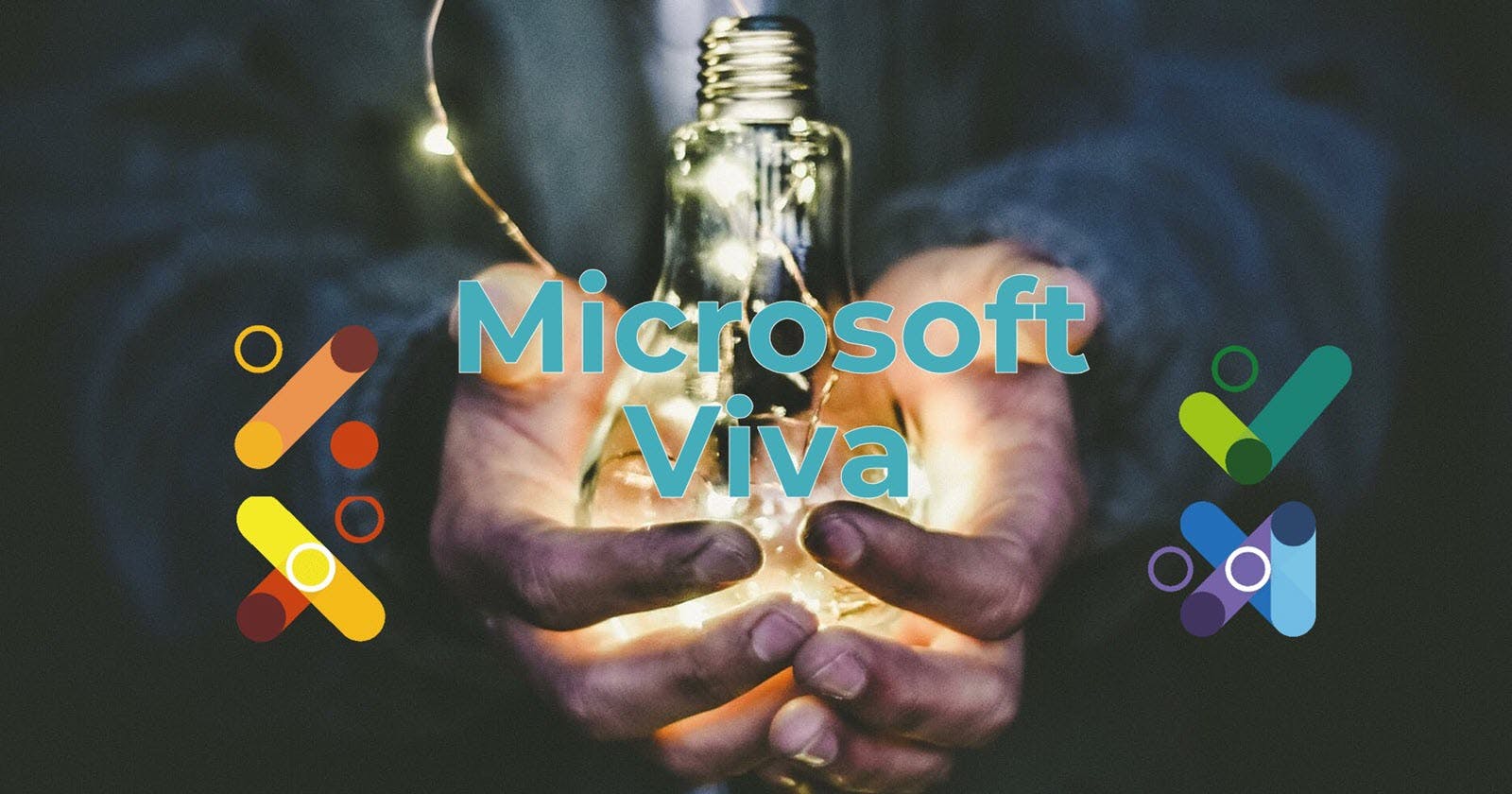Employee experience has become a bigger importance since remote-working has become a broader used way of working. When I first read about employee experience, I honestly did not understand what it was about and why it’s so important. After a while I realized, that I already knew the concept… just with different actors. In this article, I would like to give you an overview about “Employee Experience” and briefly showcase Microsoft’s Employee Experience Platform “Microsoft Viva”.

Employee Experience
To explain the term employee experience, I would like you to start from a different angle which helped me understand it easily.
Think of you as a customer of an online-store. You have certain expectations and the online-store as a company is keen to keep you on board and to re-visit the online-shop and talk good about it. Now, online-shops ensures this by measuring the so called “customer experience”. This means, they measure with KPIs and surveys how happy the customer is. Based on that feedback, things will be improved accordingly in order to perfectly met the customers expectations. You get where I’m heading to?
Employee experience is basically the same. The only difference is, that instead of having the customer in the center of attention, you have the employee.
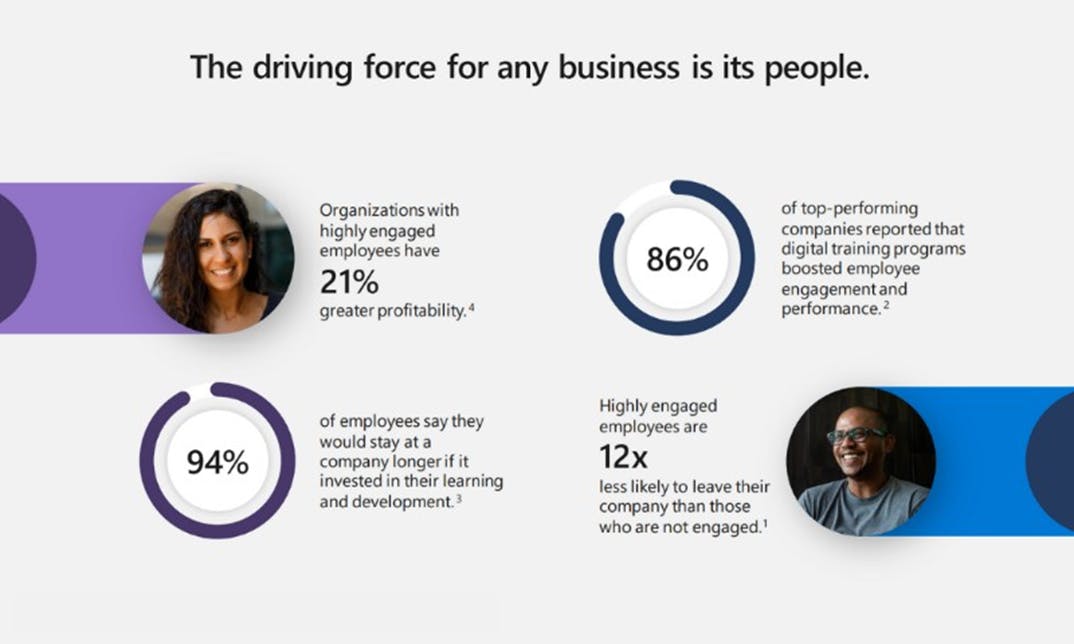 So, from the moment someone looks at a job opening, to the moment they leave a company, everything that the worker learns, does, sees, and feels contributes to their employee experience. To master employee experience management, an organization must listen to its people at each stage of the employee lifecycle, identify what matters most to them, and create personalized, bespoke experiences.
So, from the moment someone looks at a job opening, to the moment they leave a company, everything that the worker learns, does, sees, and feels contributes to their employee experience. To master employee experience management, an organization must listen to its people at each stage of the employee lifecycle, identify what matters most to them, and create personalized, bespoke experiences.
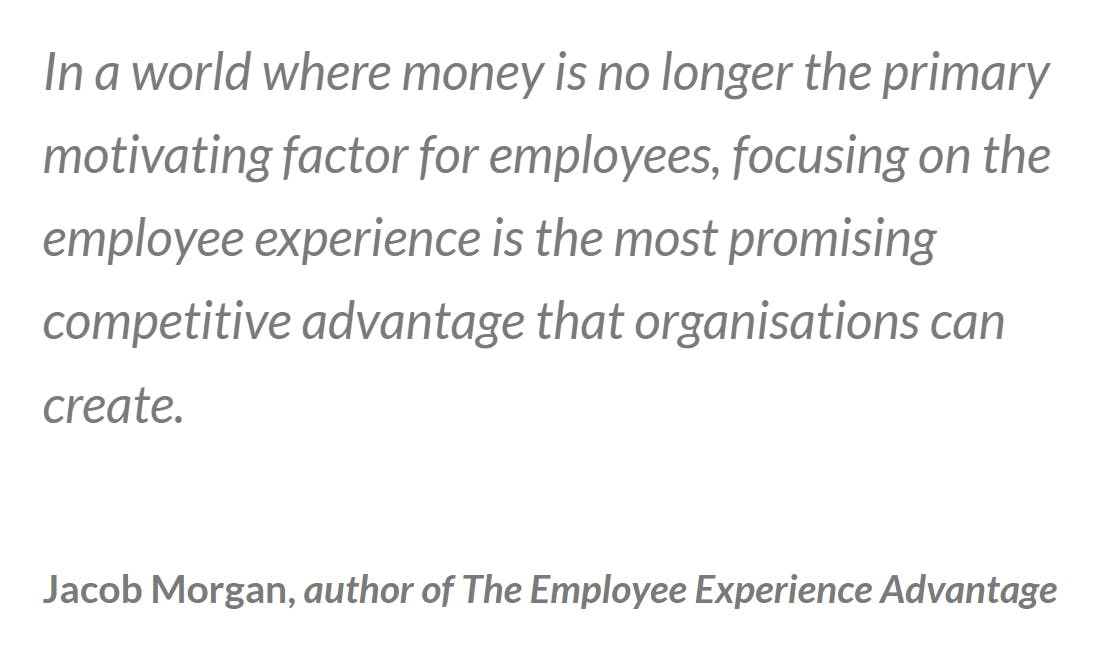
The employee experience is foundational to business performance. Sustaining customer experience efforts, improving products, and building a strong and reputable brand all require the help of all employees. Ultimately, it is their experiences – positive and negative – that will impact how hard they work, how much they collaborate, or whether they are invested in improving operational performance.
Employee Experiences Stages
Employee experience equals everything a worker learns, does, sees and feels at each stage of the employee lifecycle.

Recruitment
This includes all the steps that lead to hiring a new employee. Considerations are how long it takes to hire, how much it costs to hire, the rate of offer acceptance, and the hire’s quality. Were your job ads attractive and clear enough to catch the attention and applications of the best candidates? Did your interview process engage and reassure great candidates so they quickly accepted your job offer? How was the entire candidate experience?
Onboarding
A new hire gets up to speed with the systems, tools, and processes and comes to grips with the role’s expectations. Most new employees need “ramp time” to get up to speed and become productive in their job. Obviously, the quicker they can do this, the more profitable it is for your organisation. An effective onboarding process translates someone’s initial enthusiasm for their new job into a more meaningful, long-term connection to the brand and a commitment to doing great things while they’re there.
Development
Employee development is an ongoing stage in the employee journey, with individuals developing at different rates across a variety of skills. As employees develop within their roles, you need to quantify their productivity, ability to be a team player, and promotion aspirations. You also want to offer them the chance to expand their skill sets, an increasingly important differentiator for many employees looking to have a “portfolio career” consisting of many different experiences.
Retention
Employees are now fully ramped and integrated into the organisation. With a strong people retention strategy, you can keep them performing, developing, and contributing to the company’s success, as well as ensure they’re inspired by and connected to the company’s core vision. It makes economic sense for a company to do all it can to keep hold of existing employees. It can cost up to 50%-60% of an employee’s annual salary to replace them.
Exit
Employees can leave for a whole host of reasons: They may retire, move to another employer, or make a life change. Every employee will leave your company at some point, and finding out why is an opportunity to improve and develop the employee experience for current and future employees. Leavers may be more candid in exit interviews about why they’re going as they may feel they have nothing to lose by being brutally honest.
The rise of the employee experience

The shift from old-school employee engagement to a more holistic approach to employee experience has been driven by a number of factors – including social media, changing demographics, and more volatile economic conditions.
- The millennial generation wants more opportunities to have their say and companies need to get a deeper understanding of a group who feel, think and behave differently to the generations before them.
- The war for talent is fiercer than ever before – there are now more candidates for fewer jobs and experiences are one of the last ways to differentiate yourself as an employer.
- Organisations are changing faster than ever – digitisation, disruption and other economic forces are causing companies to shrink and expand at a more rapid pace. Meaning there’s a need to really understand the impact this is having on people more regularly than once a year.
- There’s an expectation for personalised employee experiences – employees now expect they’ll be treated as a unique person, just like they are when they interact with leading B2C brands as a consumer.
- The explosion of social media and the potential for damaging reviews to go viral has meant workplaces have become more transparent to protect company and brand reputation.
By focusing on improving the employee experience, the world’s leading brands have discovered that there are knock-on effects: not just to traditional HR metrics like turnover and absentee rates, but also on customer experience and overall profitability.
Business impact of employee experience
Good employees are your greatest investment, and they’re hard to find. When you’ve battled to attract and hire quality people, you don’t want to lose them. Employee churn eats into your HR team’s time and also your business’s bottom line. Investing in positive employee experience is crucial to creating an engaged workforce who wants to stay with you, and it’s an effective way of reducing staff turnover.
Microsoft Viva - An employee experience platform
Microsoft Viva builds on the power of Teams and Microsoft 365 to unify the employee experience across four key areas — Engagement (Viva Connections), Wellbeing (Viva Insights), Learning (Viva Learning) and Knowledge (Viva Topics) — in an integrated experience that empowers people to be their best. Microsoft offers an initial set of modules in Viva that will provide built-in capabilities, integrations from a strong and growing ecosystem of Viva partners, and platform extensibility that will enable customers to integrate their existing employee experience systems and tools with Viva to make them more accessible and discoverable to employees.
The components
Microsoft has paid particular attention to the well-being of employees in the company. Nowadays, we spend most our time on the computer (more specifically… in MS-Teams).
Therefore, having tools in place which are able to identify an excessive work-style and inform us when we’re working too much is actually pretty helpful.
Not only this, but these tools also support us also in better managing our work and take moments of break to catch-up with colleagues to catch-up with colleagues or managers. That’s why Microsoft introduced Viva Connections in it’s Employee Experience Platform. With Viva Connections, employees can easily find internal communications and corporate resources, everything from a single, customizable app on MS-Teams.
Then we also have Viva Learning, which has a clear focus on employee learning and growth. It gathers all available learning resources in a single workspace and makes them easily accessible.
Viva Topics is all about knowledge management. Thanks the usage Of artificial intelligence, the finding & exchange of files and information becomes simpler and more immediate.
Last but not least, there is also Viva Insights which has been introduced by Microsoft to visualize and develop the well-being and productivity of people in the company.
Viva Connections
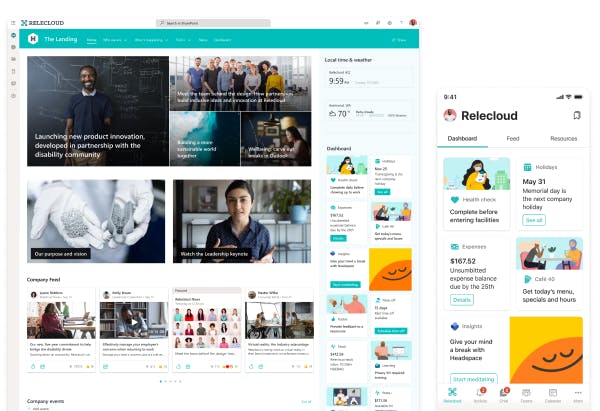 For those company which are already familiar with the advantages of having a corporate intranet, it should be pretty straight forward to see how Viva Connections provides an easy way for employees to find engage with information about the company, ongoing activities or upcoming changes. In addition to that, thanks to the dashboard functionality, employee will also be able to easily access tasks or reminders without having to leave the intranet.
For those company which are already familiar with the advantages of having a corporate intranet, it should be pretty straight forward to see how Viva Connections provides an easy way for employees to find engage with information about the company, ongoing activities or upcoming changes. In addition to that, thanks to the dashboard functionality, employee will also be able to easily access tasks or reminders without having to leave the intranet.
If you don’t have an intranet-solution in place, then you should start considering to implement one. Why? Viva Connections is part of almost every Microsoft 365 business/enterprise subscription and even if you’re a small company… you can set Viva Connection up with a few clicks and provide to your employees useful information for they everyday work within a unified experience in Microsoft Teams.
Viva Learning
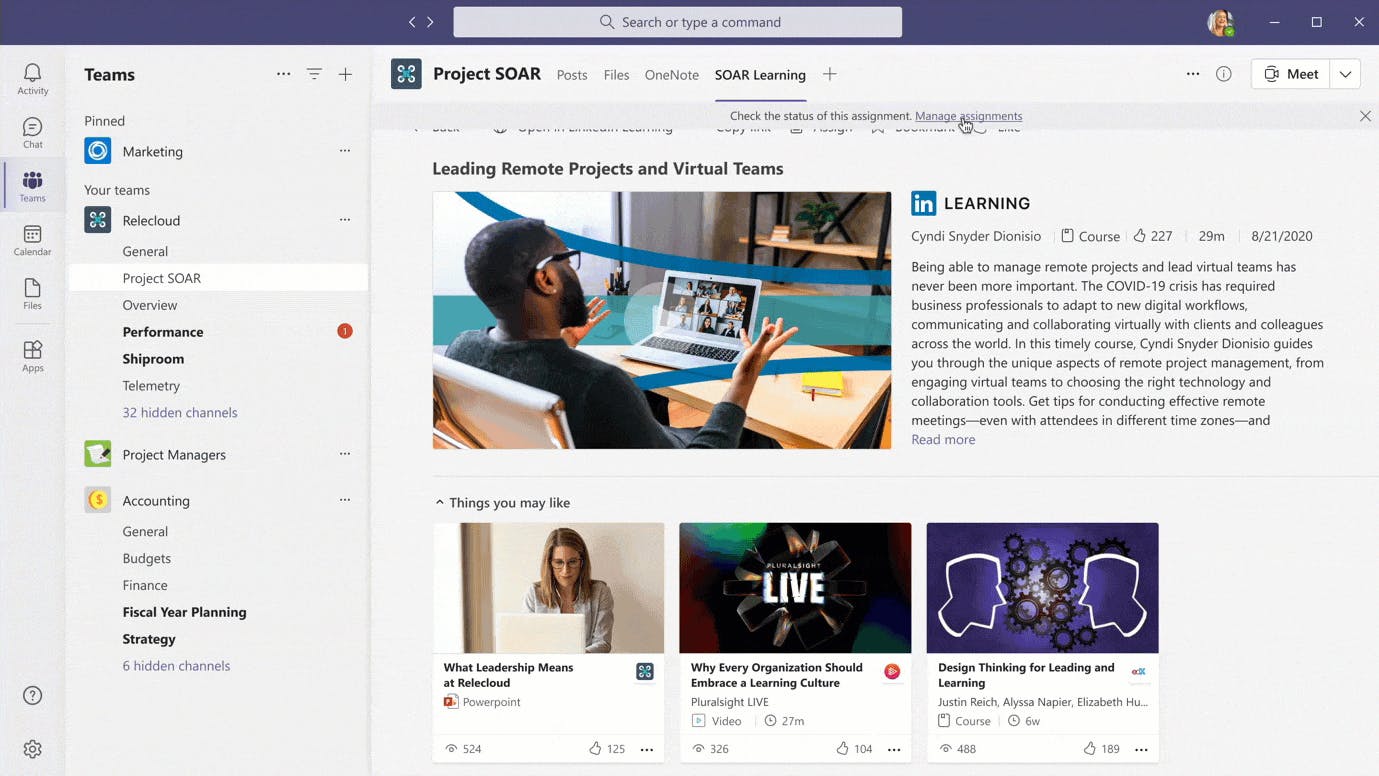 Microsoft Viva Learning is designed to enable people in the company to develop skills within the working processes in order to provide an easy way for them to learn and grow in the workplace. How is this done? Viva Learning helps people to acquire knowledge easily by providing them with the right content at the right time.
Through the Viva Learning App in MS-Teams people can train using content offered by Microsoft, third parties or corporate content.
Microsoft Viva Learning is designed to enable people in the company to develop skills within the working processes in order to provide an easy way for them to learn and grow in the workplace. How is this done? Viva Learning helps people to acquire knowledge easily by providing them with the right content at the right time.
Through the Viva Learning App in MS-Teams people can train using content offered by Microsoft, third parties or corporate content.
These can therefore be used within Teams and can be shared in work groups.
Viva Learning’s main features are the following:
- External Content – Add content from 3rd party platforms such as Linked-In Learning and others.
- Seamless experience with MS-Teams – Viva Learning is an app for MS-Teams. - Training Management – As a Manager in Viva Learning, you can follow training competition of your team members.
- Sharing – Every training can be shared directly in an MS-Teams Chat or Channel.
Viva Topics
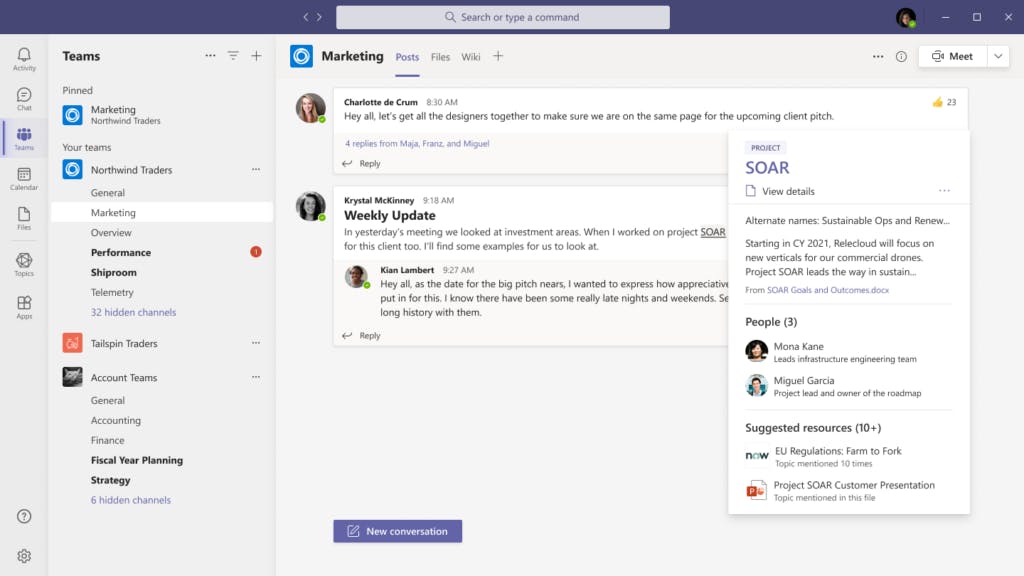 Microsoft Viva Topics is one of the outcome from Project Cortex and is, beside of being part of the Microsoft Viva Family, also part of Microsoft’s Knowledge & Content Services. In my opinion a fundamental brick in order to achieve the vision to provide every company the tools to create, maintain and develop a knowledge network. But be warned, a substantial effort is needed to build the set of topics found in SharePoint Online content before apps can surface topic cards to users.
Microsoft Viva Topics is one of the outcome from Project Cortex and is, beside of being part of the Microsoft Viva Family, also part of Microsoft’s Knowledge & Content Services. In my opinion a fundamental brick in order to achieve the vision to provide every company the tools to create, maintain and develop a knowledge network. But be warned, a substantial effort is needed to build the set of topics found in SharePoint Online content before apps can surface topic cards to users.
Microsoft Viva Topics uses AI to reason over content across teams and systems, recognizing content types, extracting important information, and automatically organizing content into shared topics like projects, products, processes and customers. Viva Topics then creates a knowledge network based on relationships among topics, content, and people. New topic pages and knowledge centers—created and updated by AI—enable experts to curate and share knowledge with wiki-like simplicity. And topic cards deliver knowledge just-in-time to people in Outlook, Microsoft Teams, and Office. Microsoft Viva Topics builds on intelligence from the Microsoft Graph, a variety of Microsoft AI technologies, and the content services of SharePoint.
Viva Topic’s main features are the following:
- Topic Cards – Topics are identified with AI by analizing existing data. Knowledge about a Topic gets shown everytime a topic is detected automatically on a topic card.
- Topic Pages – Every topic can be explored more in detail in a topic page. Viva Topics builds topic pages automatically from your content by using AI.
- Topic Map – Since it’s a goal to build a so called knowledge network, a topic map shows all relationship between various existing topics in the company.
- Collaboration – Every topic gets curated by one or more experts which receive the respective role and can keep the topic page up-to-date, answer FAQs and get contacted directly by people.
Viva Insights
Microsoft Viva Insights represents the work-related aspects based on well-being and productivity of an individual in the company.
It provides people, managers and leaders with personalized information which enables them to help everyone in the organization grow. In addition to the new productivity and health experiences, Viva Insight will also integrate features from “Microsoft Workplace Analytics” and “Microsoft MyAnalytics” over time.
The main purpose of these two tools is to evaluate the user’s interaction during his daily life with Microsoft 365 tools. A notably amount of data gets stored and is used for example to see how many e-mails are received, how long a person spends writing emails, how much time is spent in meetings, etc.
All these elements are presented in two different ways:
- Personal Insights – where a person can see how he/she is using Microsoft 365, manage his agenda and block time-blocks to focus on activities (focus-time)
- Aggregated information from Workplace Analytics which allows managers and leaders to have a high-level view on the daily productivity of workers.
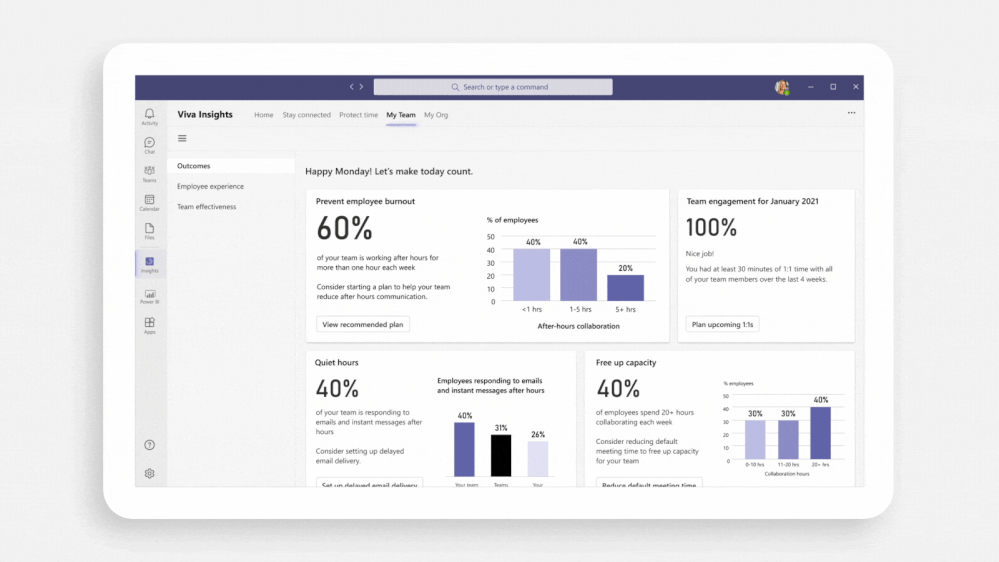 The most interesting feature-set in Viva Insights is the one for individuals (Personal Insights). However, Microsoft Viva Insights also offers Dashboards for Managers (e.g. Team leaders, Head of Department) and Leaders (Leadership-Team Members).
The most interesting feature-set in Viva Insights is the one for individuals (Personal Insights). However, Microsoft Viva Insights also offers Dashboards for Managers (e.g. Team leaders, Head of Department) and Leaders (Leadership-Team Members).
Conclusion
When I first read about Microsoft Viva, I honestly did not really understand why Microsoft was trying to make a point. Even the term “Employee Experience” was also unknown to me.
After digging more into the topic, I really see the value of every single component and I am pretty sure that companies will recognize this too in the near future.
I learned that Microsoft made a strong commitment to AI in their Mission in 2017. That’s ironically also the year, when Microsoft started working on Project Cortex (which brought to the market “SharePoint Syntex” and the foundation for “Viva Topics” in the context of Microsoft Konwledge & Content Services). So they’re working on including AI in our daily worklife and get most out of the available informations within a M365-Tenant since more than 4 years now.
With Microsoft Viva as an Employee Experience, and Konwledge & Content Services such as SharePoint Syntex evolving further, I think that Microsoft is enriching the Microsoft 365 ecosystem with two important and always missed capabilities. I think it’s pretty amazing how deep Artificial Intelligence is getting in our working lives and I also see that every company will have to embrace these new way of acting. The days where you could afford to not consider Artificial Intelligence to value the information you generate and use them to optimize efficiency, well-being and many other aspects of the daily life are definitely coming to an end. I am looking forward to see with what else Microsoft will come up in the next few years.
In the meantime, I will surely remain tuned on the Microsoft Viva channel and also keep an eye on Microsoft’s Knowledge & Content Services and I suggest that to evey engineer which is planning to contribute to modern collaboration & content management.

